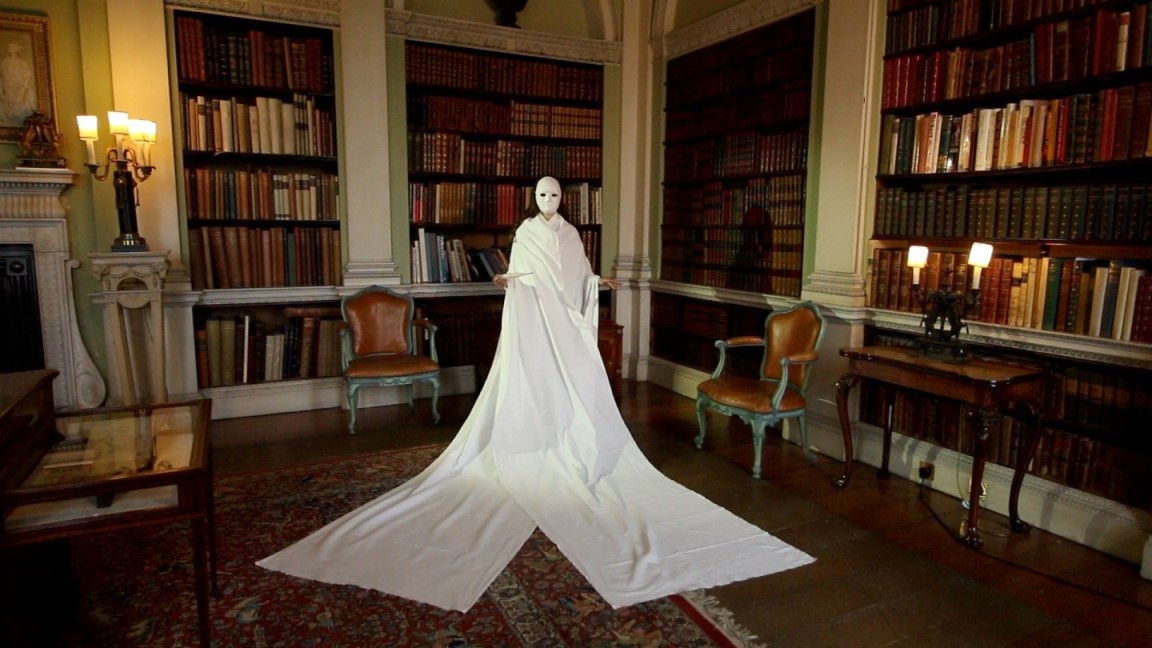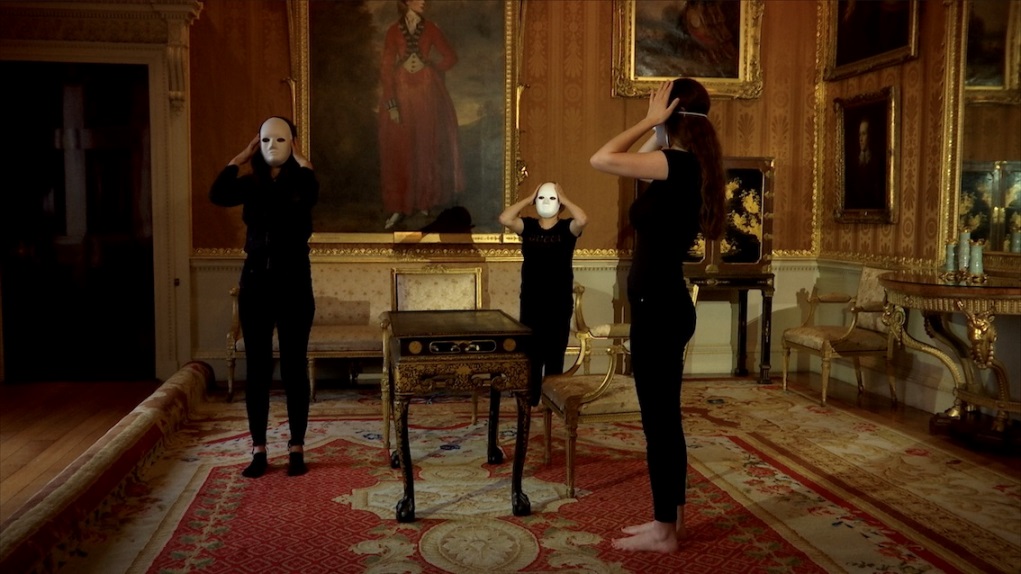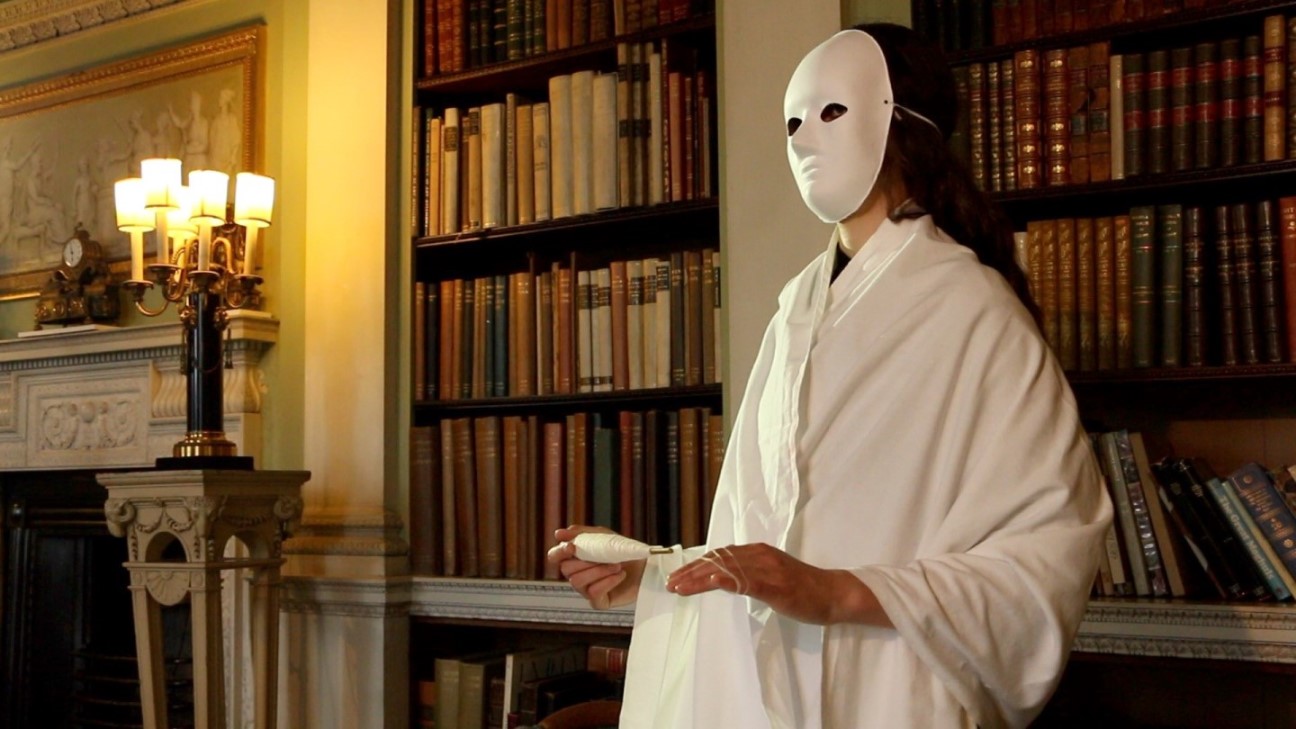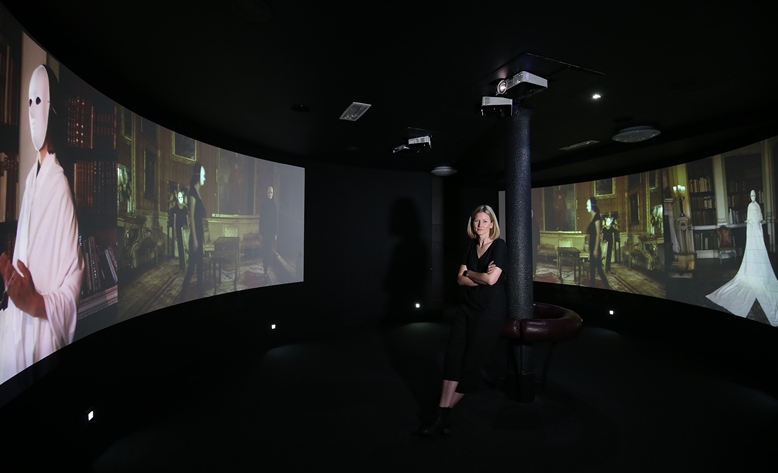Kwant, Elizabeth - VM - Elizabeth Kwant
Elizabeth Kwant: Am I not a woman and a sister?

Surveying the land: Legacies of Slavery
by Elizabeth Kwant
Every image of the past that is not recognized by the present as one of its own concerns threatens to disappear irretrievably. Walter Benjamin.
I can recall the exact moment I first made a connection between colonialization and the contemporary Mediterranean Migration crisis. I lay surrounded by collections of antique objects, which though shrouded in dust still evoked a sense of imperialism, adventure, exploration, and above all wealth and status. Contorted, my physical body position echoed that of a migrant’s journey – from Africa across the straits of Gibraltar to Europe – the most westerly migration route in the Mediterranean (at present one of the most hazardous transit routes in the world). It was while making the work ‘In-Transit’, performing migrants’ stories in key sites across Europe, that my interest in performance and video began to crystallize. In these sites real bodies, with real life stories, take on symbolic significance.
The importance of the body was later underscored for me by Bessel Van Der Kolk in his book The Body Keeps the Score: Mind, Brain and Body in the Transformation of Trauma. In this ground- breaking work Van Der Kolk writes: „Our sense of agency, how much we feel in control, is defined by our relationship with our bodies and its rhythms: our waking and sleeping and how we eat, sit and walk define the contours of our days. In order to find our voice, we have to be in our bodies – able to breathe fully and able to access our inner sensations… Acting is an experience of using your body to take your place in life.” The story of slavery, as Jean-François Manicom curator of The International Slavery Museum Liverpool suggests, is a story about the body; bodies are captured, imprisoned, transported, sold and worked. The challenge in a museum context is how to make something which we know intellectually become experiential. How can we speak about something so horrendous as slavery? Jean-François believes the answer is art.
Am I not a woman and a sister attempts to bridge colonial slavery (specifically the trans- Atlantic slave trade) with modern-day slavery. It is installed in the Middle Passage Gallery at The International Slavery Museum Liverpool, which is located on The Royal Albert Docks (once the primary departure point for slave ships embarking upon the triangular trade from the UK to the African coast and onto the USA/ West Indies). Between 1700 and 1807 around 5000 slaving voyages departed from Liverpool, making Liverpool the forerunner in the human trade, transporting around one and a half million Africans into slavery. It is within this context that my new artist’s film Am I not a woman and a sister? was produced, a four-channel film with a specially commissioned soundtrack, installed within a circular room in the museum. The film is a collaboration between female survivors of modern-day slavery in partnership with national charity City Hearts and British Barbadian choreographer Magdalen Bartlett Luambia.

Over the course of 10 weeks the women attended movement workshops specifically designed to give them tools to create their own performances. These performances were captured at Harewood House, a stately home near Leeds built by Edwin Lascelles. A plantation owner, Lascelles made his fortune in the West Indies and employed the finest architects of the time to design and build Harewood House.
There is a national amnesia about colonial slavery. At school in Britain we revere William Wilberforce as the hero who abolished slavery, but we hear little about the connections between wealth and subjugation, and even less about where the money came from which fueled the great 'industrial revolution’ of Britain in the early part of the 19th century. In reality slavery continued for many years following abolition. Did you know that when slavery was abolished in Parliament British slave owners were compensated for their loss of ‘property’? That compensation totaled such a sum (40% of the governments yearly income) that it was only fully repaid by the British taxpayer in 2015. The slaves themselves received nothing.

Through gesture, objects, movement and sound Am I not a woman and a sister? weaves a thread from the trans-Atlantic slave trade to modern-day slavery. We follow as a woman binds herself in white cotton thread, becoming increasingly entwined. However here she’s in control, her gaze pierces from behind the white mask (a necessary tool to protect the identity of the women, which also takes on symbolic significance reinforcing the inhumanity of the trade). Subverting the viewers gaze she is no longer a passive fetishized female, but an active participant in the creation of the film.
The climax of the film rests in the image of a lone woman, draped in white cotton (a gift from the National Trust’s Quarry Bank Mill near Manchester, once a thriving cotton mill importing slave made cotton from the USA and founded from the profits of slavery). The image of a lone woman rhythmically binding and unwinding in a continuous repetitive gesture makes for unsettled viewing. The visuals are compounded by a hauntingly beautiful soundtrack juxtaposing found sounds from Harewood House (clock ticking) with the harsh sounds of industrial machinery (Quarry Bank Mill) composed by musician Sarah Sarhandi. The film ends as it begins with the image of a lone woman. She sits crossed legged on the floor humming to herself as if doing mundane housework, whilst meticulously folding the white cloth. The film loops and the process of folding begins again.
Slavery continues today.
*******
Elizabeth Kwant: Am I not a woman and a sister?, 2019. Until 15th February 2020 (open daily 10 - 5pm) at the International Slavery Museum Liverpool. https://www.liverpoolmuseums.org.uk/ism/
Copyright of images: 1. Elizabeth Kwant Art, 2019. 2. Gareth Jones Photography 2019. 3. Elizabeth Kwant Art, 2019. 4. Elizabeth Kwant Art, 2019.
Elizabeth Kwant is a British artist working across performance, video, photography and print often in a collaborative way with communities. Her work engages with contemporary issues of social justice; migration, immigration detention, colonialism and slavery. She is based in Manchester, where she’s a member of The Castlefield Gallery Associates and founder of Zellij Arts – an artist led project dedicated to supporting and exhibiting the work of contemporary international artists working across borders – particularly from the Middle East and diaspora. Her work has been exhibited in galleries, museums, churches and site-specific contexts locally and internationally. www.elizabethkwant.com
ArtWay Visual Meditation 2 February 2020



